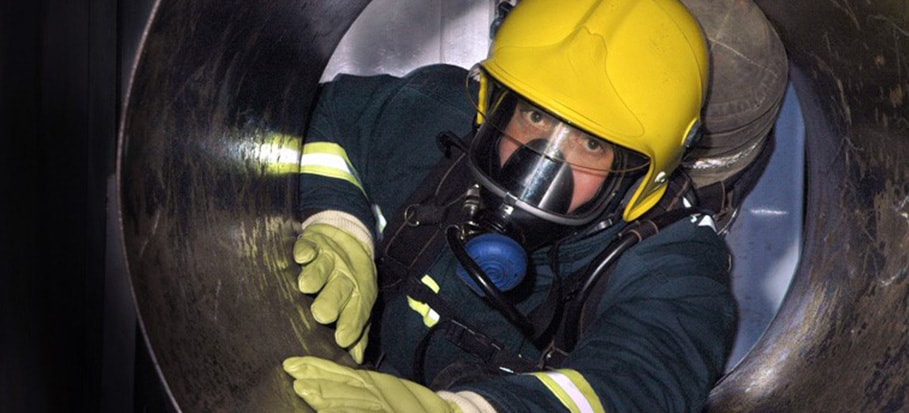Confined spaces are work areas that have limited access or ventilation and are not intended for continuous human occupancy, with these spaces being common in many industries such as mining, construction, manufacturing and agriculture. Working in a confined space can pose significant challenges and risks for workers, making it essential to understand the nature and characteristics of confined spaces and how to manage the associated risks. This understanding underscores the importance of training in this area.
So What are the Risks in Confined Spaces?
As mentioned, confined spaces are work areas with limited access, ventilation or space, and they are not meant for people to stay in for long periods. Working in confined spaces can be dangerous, as they may have:
- A lack of oxygen
- Combustible substances
- Toxic substances
- Entrapment or engulfment
- Fall hazards
Our courses will help you understand how to identify and control these risks, ensuring you are prepared for working in these spaces.
Some Key Things to Consider
Training and Education
Knowledge isn’t just power, it’s the cornerstone of safety in confined spaces, and here at Link Resources we offer comprehensive training programs that go beyond the basics. Covering confined space identification, hazard recognition, safety procedures and emergency response, these programs ensure that every worker is a guardian of safety, armed with up-to-date knowledge.
The Importance of the Right Equipment and Safety Gear
The right gear can be the difference between safety and vulnerability. Understanding the components of safety gear, from respirators to safety harnesses and how to use them effectively is an essential skill. Our commitment extends to the equipment used for monitoring and testing, ensuring accuracy and reliability in every operation.
Periodic Inspections and Testing
The commitment to safety doesn’t wane with time; it evolves. Link Resources establishes a rigorous schedule for inspections and testing, acknowledging that the confined space environment is dynamic. Regular checks become a proactive measure, identifying changes in conditions promptly and addressing potential risks before they materialise.

How to Assess Hazards in Confined Spaces
A hazard in a confined space is anything that has the potential to cause harm to people, property, or the environment. An assessment is a systematic process of identifying, evaluating and controlling the hazards that may arise. This process involves:
- Identifying Hazards: Recognising potential sources of harm within the confined space.
- Evaluating Risks: Assessing the likelihood and severity of harm from identified hazards.
- Implementing Control Measures: Applying strategies to mitigate risks, such as ventilation, isolation, and personal protective equipment (PPE).
- Monitoring and Reviewing: Continuously checking the effectiveness of control measures and making adjustments as necessary.
Emergency Preparedness and Response
Even with the best preventive measures, emergencies can happen, and being prepared for such events is crucial. This includes having a detailed emergency plan, regular drills, and ensuring all workers are familiar with emergency procedures. Quick and effective response can mean the difference between life and death in a confined space emergency.
Managing risks in confined spaces requires a comprehensive approach that includes thorough training, proper equipment, regular inspections, and effective emergency preparedness. By understanding and implementing these key elements, workers can significantly reduce the risks associated with confined spaces, ensuring a safer working environment. Remember, safety is a continuous journey, not a destination, and staying informed and prepared is the best way to navigate this journey.

